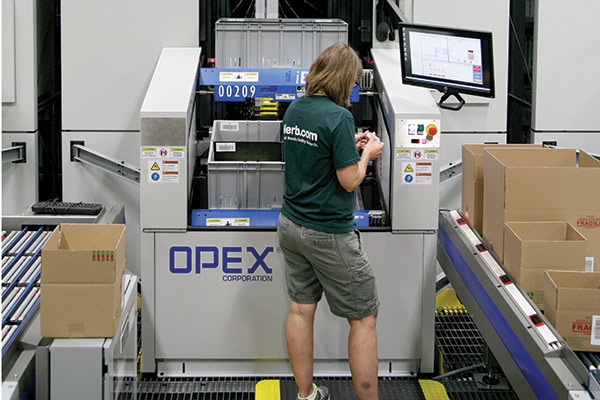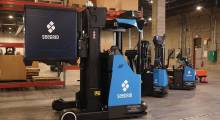In the face of runaway SKU growth, space constraints, labor shortages and booming, labor-intensive e-commerce, automation has become a compelling way for businesses to keep up. Benefiting from the struggles and successes of their compact, European counterparts, distributors stateside have adopted automated storage at a rising pace.
Standardization of automated storage and retrieval systems (AS/RS) and economies of scale have broadened the market to include operations of all sizes. New adopters of automation have plentiful options, and automation veterans have access to solutions and features to take them to the next level.
“At the macro level, I think the U.S. market is catching on to a higher level of automation,” says Markus Schmidt, president of Swisslog Logistics Automation Americas. “I’ve said it for the last 10 years, but we’re really seeing it now.”
Modern spoke with some automated storage experts to get a sense of the technologies and methodologies on the rise today.
Moving ahead by staying put
Ken Ruehrdanz, manager of the distribution systems market for Dematic North America, points to one key trend driving interest in automated storage solutions.
“The biggest thing going today is a goods-to-person methodology,” Ruehrdanz says. “It’s a compelling logistics solution, and I see widespread adoption.”
Shuttle systems are particularly well-suited to serving as inventory engines in goods-to-person applications. They can feed workstations at an extremely high rate, he says, which is important to justify the investment.
Ruehrdanz says the use of shuttles is increasing for applications like feeding a mixed-case palletizer or sequenced, just-in-time lineside parts delivery solutions, or as a work-in-process storage buffer for manufacturing. Another trend gaining traction, he says, is using shuttles to automatically replenish pick faces. When done manually, the replenishment function is labor intensive and prone to accuracy issues, but automated storage can make it more accurate in less space.
“If you’re not going to pursue goods-to-person, it’s a way of blending automated storage with a traditional pick module, and I see a big opportunity to get some semi-automation in pick modules,” Ruehrdanz says.
Ruehrdanz also notes an increased interest in goods-to-robot variations. “For a newer order picking methodology, there are already a lot of applications. The technology is there and mature enough that a robot can be a one-to-one replacement for a human at a workstation,” he says. “We’ve seen robots can work at a higher sustained rate, and they can work shift after shift with no breaks.”
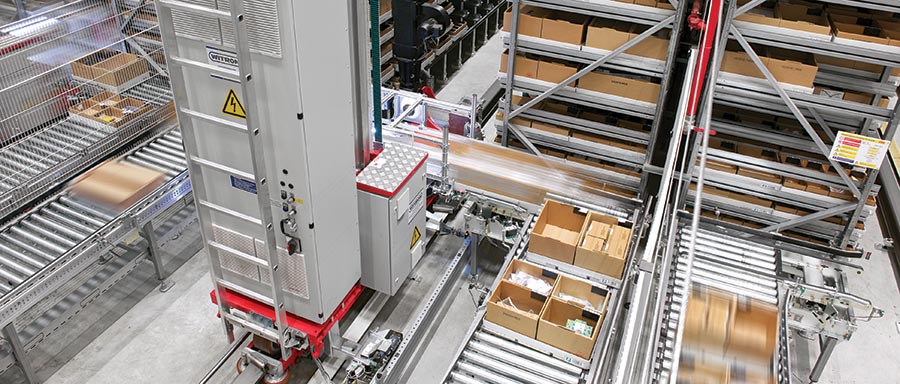
There are ways to teach an old AS/RS new tricks, including subdividing bins and modifying cranes to carry as many as eight loads at a time.
Another robot trend is at play once items are retrieved from storage. Here, autonomous mobile robots have proved to be an adaptable alternative to fixed conveyors, Schmidt says, noting that flexibility is a central objective for automated storage solutions.
“In the future, AS/RS supported by mobile robots will extend into areas where previously you would have had conveyors,” Schmidt says. “You can then envision a scenario where mobile robots leave the grid to deliver to other stations or in completely different zones.”
Several AS/RS technologies are based around robots that can move independently between levels and aisles to access any inventory location. You can change the number of robots to boost throughput or bins to increase inventory.
John Sauer, business development manager for OPEX Warehouse Automation, says this type of solution bypasses a key limitation of traditional shuttle systems. If a shuttle is married to a level and it stops working, then the inventory on that level is not accessible.
“Or, a crane could go down and the whole thing is useless. Now each robot is autonomous, so one can be quickly removed from the system, which will continue operating,” Sauer says. “There’s baked-in redundancy in the system.”
This functionality allows more freedom for the customer to avoid committing to invest in an unpredictable future, Swisslog’s Schmidt says, because the solution works for current conditions and can expand.
One example of this technology is AutoStore, a solution that uses robots and bins to process small parts orders. It combines storage and picking to enable stacking of bins and storage of multiple SKUs in one bin. The system learns which products have a higher rotation and stores them on the top layer to ensure faster picking times. AutoStore is available from multiple suppliers.
Schmidt explains that Swisslog has more than 130 AutoStore systems at work globally, which together use more than 3,500 robots to manage 2.9 million storage bins. The smallest deployments have only 1,000 bins, the largest more than 360,000. The majority are around 30,000 to 50,000 bins for goods-to-person picking. On the small end, he says, the systems are becoming more competitive against vertical and horizontal carousels.
Sauer explains that many customers are looking to match solutions to the SKU set, which often results in a system comprised of a variety of technologies.
“Most are looking for goods-to-person, but there’s only a certain population of SKUs and levels of activity that are suited for that.” Sauer says, “So others are looking at more traditional person-to-goods and collaborative robot applications as a less aggressive and capital-friendly stopgap.”
Whether paper-based to cart or light-directed, customers understand labor requirements and their baseline picks per hour or per person. A cobot gets operations a little further along the automation path, Sauer says, by boosting accuracy and speed. Of course, these will never match the 400 picks per hour possible with a goods-to-person setup.
But the real key to making small applications viable is the software, which Schmidt says has also become more standardized and cost-effective to deploy. As a result, instead of taking 500 hours to commission, a system can be up and running in two weeks.
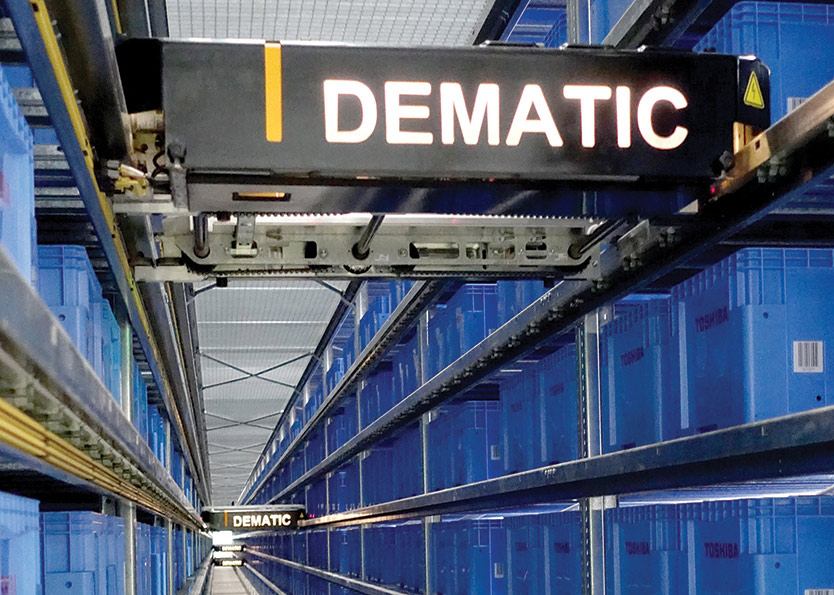
Dense and scalable, shuttle systems are a popular solution for goods-to-person applications.
Adaptable automation
Automation isn’t for everyone and supplies of capital, time and space can be limited. And, even for those who have installed automated storage, SKU proliferation and ever-growing service levels challenge those systems to adapt.
Norman Leonhardt, director of business development for Witron Integrated Logistics, says it’s ideal to design an initial system to allow for expansion, but additional square footage is not always an option. In automated storage systems where space is constrained, a few creative techniques can push the system to new levels. If storing small items in totes or cartons, it is often possible to subdivide them into multiple compartments, or it might be possible to improve density by stacking containers.
One customer’s AS/RS was built to house 80,000 SKUs and is now north of 120,000, Leonhardt says. In addition to boosting density, the customer was able to use smaller load carriers that were more conducive to divided compartments. Leonhardt says it’s relatively simple to update hardware or software to sustain accuracy after subdividing, but some workstations might benefit from light-directed picking tools, pictures of items, bar codes, RFID, or scales to verify weight.
The capabilities of AS/RS cranes have also been enhanced in recent years, from single-load cranes to dual-load and more. New double-decker cranes with upper and lower levels can retrieve eight different items while software optimizes every pass through storage. In fact, these technologies can sometimes negate the need for an AS/RS attendant to build a pallet for a store.
“There are cranes and modules that serve as storage as well as picking technology,” says Leonhardt, who adds that such applications are more common in Europe or in closed-loop applications with standardized tote sizes. “The crane can clamp and stack multiple items on a single pass, and present a load ready to be shipped. It’s a combination of automated storage and retrieval while composing the order in parallel.”
Mission: Maintenance
Once the system is up and running, it’s important to keep it that way. Components are continuously improved over time to increase reliability, but ruggedness only goes so far. Leonhardt says new systems are packed with sensors that provide intelligence about the condition of the equipment as well as the flow of goods.
“This enables a lot of preventative maintenance, so if a belt tends to last six months, for example, you can reduce downtime by making a quick, targeted check at the right time,” Leonhardt says. “When you can prevent parts breaking and predict replacement you can optimize the spare parts kept on-hand.”
Intelligent systems can deliver self-diagnostic data as well as performance suggestions, Leonhardt says. For example, it can identify an item is moving slower and that it might make sense to order less in coming months.
“Because it keeps 100% track of inventory at any time, it can communicate with purchasing and procurement departments to provide item-specific information,” he says. “Should we order more, order less or retire the product?”
Maintaining the system has become easier thanks to the standardization and modularity of automated storage components, software and workstations.
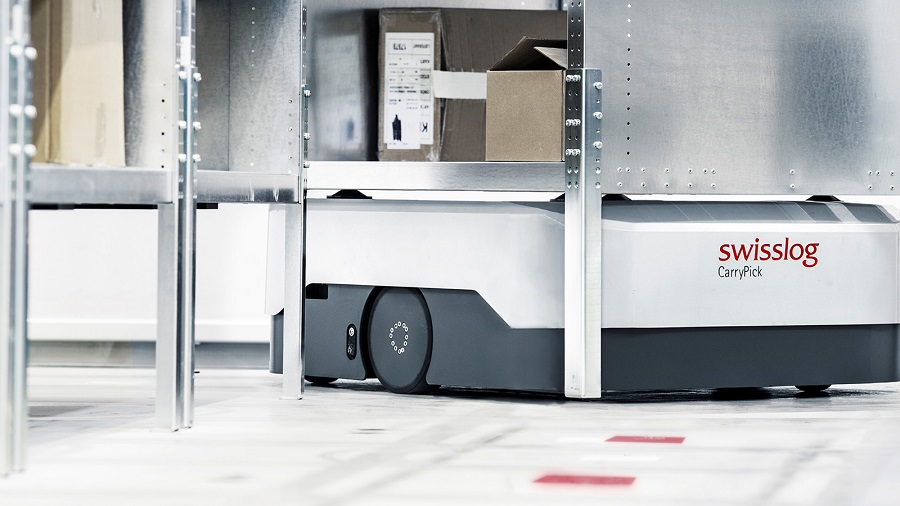
As mobile robots become more capable, the strengths of automated storage are expanding from a fixed cube to anywhere in a facility.
“Just five years ago, there was more customization of stations and software,” Ruehrdanz says. “When they’re pre-engineered, it brings capital expense down and shortens the delivery schedule. Now, they have predefined performance characteristics that we can guarantee, and it makes them inherently more reliable and easier to service.”
Schmidt says the industry will continue to benefit from more cost-effective, proven solutions that put suppliers in a better position to provide aftermarket services. It also confers more ownership to the end-user, who can quickly replace modular components instead of repairing them on site or waiting for an expert.
Ruehrdanz says any integrated, automated solution has to be more sophisticated due to the complexity of fulfillment, especially in piece picking. To support a goods-to-person application, Ruehrdanz says an algorithm needs to be able to bring the precise load to a workstation at the exact time to make an efficient pick happen. Most often, multiple orders are picked at a time, so the software has to do order planning up front. If it groups six orders together at one station, it brings out a single unit of inventory and gets multiple picks.
He offers the example of an electronics and consumer goods distributor that implemented a Multishuttle automated storage system with a modular goods-to-person workstation. The system was a pre-engineered and pre-configured order fulfillment solution that reduced project costs, lead time, and the installation schedule. Stock for orders is retrieved from an inventory buffer at a rate of 300 to 400 totes per hour, and the dual-purpose workstations can be used for replenishment as well as picking.
“The company needed a solution that was space-effective and flexible,” he says. “The system can be expanded with additional aisles of storage and more workstations in the future.”
Companies mentioned in this article:
Article topics
